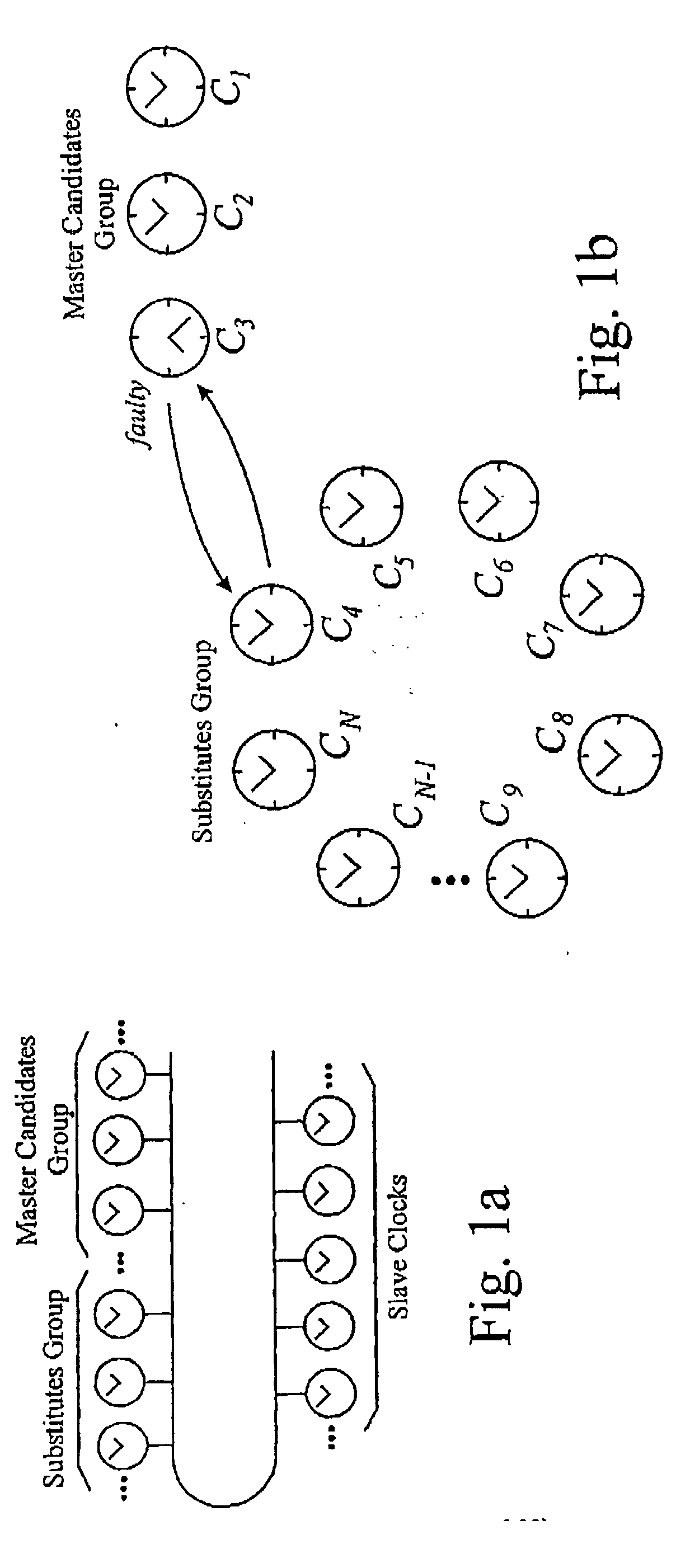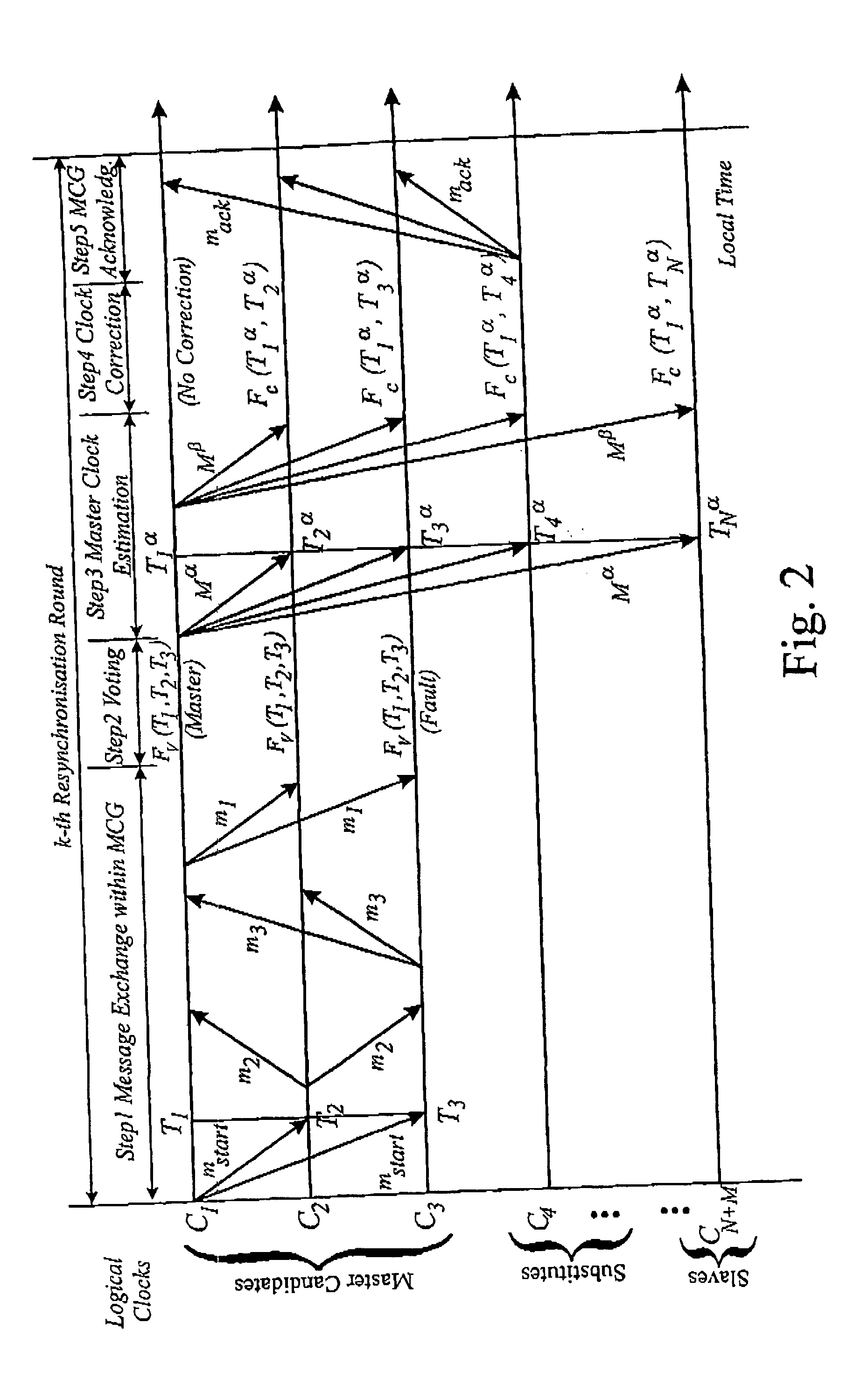Fault-tolerant clock synchronisation
a clock synchronisation and fault-tolerant technology, applied in the direction of radio-controlled time-pieces, redundant hardware error correction, transmission, etc., can solve the problems of synchronisation error, no longer available clocks to be selected as master clocks, and not being wise to choose either the fastest or slowest master clocks as master clocks, so as to improve real-time clock uniformity
- Summary
- Abstract
- Description
- Claims
- Application Information
AI Technical Summary
Benefits of technology
Problems solved by technology
Method used
Image
Examples
Embodiment Construction
[0110] The embodiments of the present invention that will now be described provide a reliable clock synchronisation method for distributed real-time systems using a CAN bus. They make use of a number of features of the CAN protocol, which will briefly be described, with the result that a highly fault tolerant clock synchronisation system can be put in place using software alone.
[0111] 1. Atomic Broadcasting
[0112] Atomic broadcasting is a feature of the CAN protocol that enables a node in the system to broadcast a message to every other node in the system. To prevent messages from more than one node being broadcast simultaneously, some form of bus arbitration process is used, but once bus access is granted by the arbitration process, the message is received substantially simultaneously by all the other nodes in the system. Receipt by the other nodes is is acknowledged.
[0113] By “substantially simultaneously” is meant at times that differ from one another by substantially less than...
PUM
 Login to View More
Login to View More Abstract
Description
Claims
Application Information
 Login to View More
Login to View More - R&D
- Intellectual Property
- Life Sciences
- Materials
- Tech Scout
- Unparalleled Data Quality
- Higher Quality Content
- 60% Fewer Hallucinations
Browse by: Latest US Patents, China's latest patents, Technical Efficacy Thesaurus, Application Domain, Technology Topic, Popular Technical Reports.
© 2025 PatSnap. All rights reserved.Legal|Privacy policy|Modern Slavery Act Transparency Statement|Sitemap|About US| Contact US: help@patsnap.com



